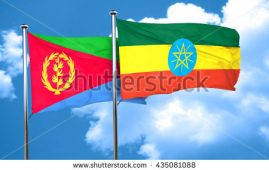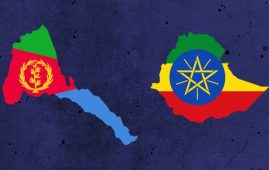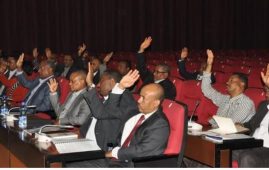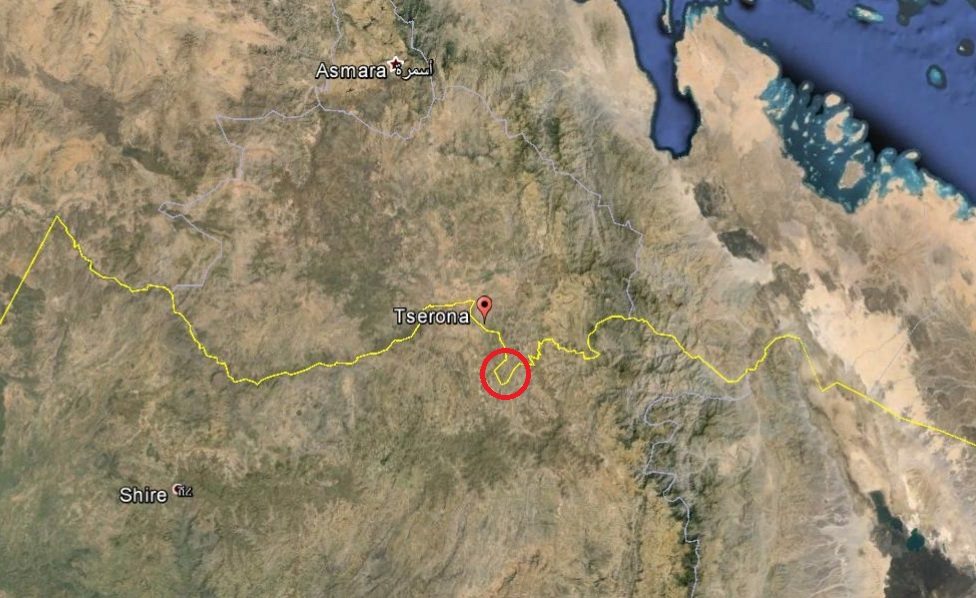Highlight: The choice of a long-term successor to Prime Minister Meles Zenawi is likely to expose tensions within the ruling EPRDF and its ethnically defined sub-parties. Constant vigilance is required to prevent Ethiopia’s enemies in Eritrea and Somalia from linking up with internal armed groups such as OLF & ONLF.
The Washington based think tank, Center for Strategic and International Studies(CSIS), a brief study report titled ‘Ethiopia: Assessing Risks to Instability’ and dated June 2011.
The study is part of a series that assesses the risks of instability in 10 African countries in the next decade. It is AFRICOM, the US African Command, which commissioned the study project.
The project is prompted by the recent developments in Northern Africa and Middle East, which took US officials by surprise. Thus, this study project is intended to identify potential causes of instability and to enable US policymakers devise responses and contingency plans in advance.
However, the study cautions, it is not meant to provide a hard and fast predictions and should be treated as a ‘thought experiment’. It notes:
The intention is not to single out countries believed to be at risk of impending disaster and make judgments about how they will collapse. Few, if any, of the countries in this series are imminent risk of breakdown. All of them have coping mechanism that militate against conflict, and discussions of potential ‘worst-case scenario’ have to be viewed with this qualification in mind.
So far two papers, on Ethiopia and on Sudan, have been released.
The paper on Ethiopian is is authored by Terence Lyons, a long time commentator on Horn of African politics and a professor at George Mason University. He has served in election  observation missions to Ethiopia in 1995 and 2005. In addition to his profile, it is likely that he enjoyed a wider cooperation from US diplomats and military attachés, as the study is commissioned by AFRIOCOM. Thus, despite some inaccuracies and hasty inferences observable in the paper and the author’s political bias towards EPRDF, it is likely to be informative, at least of one weighty perspective on EPRDF. With that in mind, I decided to share you the section of the paper on what may destabilize Ethiopia and how.
observation missions to Ethiopia in 1995 and 2005. In addition to his profile, it is likely that he enjoyed a wider cooperation from US diplomats and military attachés, as the study is commissioned by AFRIOCOM. Thus, despite some inaccuracies and hasty inferences observable in the paper and the author’s political bias towards EPRDF, it is likely to be informative, at least of one weighty perspective on EPRDF. With that in mind, I decided to share you the section of the paper on what may destabilize Ethiopia and how.
The papers summarizes the major points as ‘key stress points’. Those are:
- In the short to medium terms, Ethiopia is likely to remain stable but brittle. The authoritarian ruling party, the Ethiopian People’s Revolutionary Democratic Front (EPRDF), has consolidated power across all levels of government and society, efficiently suppressing political opposition.
- The choice of a long-term successor to Prime Minister Meles Zenawi is likely to expose tensions within the ruling EPRDF and its ethnically defined sub-parties, and exacerbate friction between some of Ethiopia’s most volatile regions.
- Ethiopia faces multiple security threats, which taken alone can be contained by the military but if combined would threaten to overwhelm the state, triggering serious instability and violence. Constant vigilance is required by Ethiopia to prevent its enemies in Eritrea and Somalia from linking up with internal armed groups such as the Oromo Liberation Front and the Ogaden National Liberation Front.
Pondering on what factors could collapse EPRDF’s rule and destabilize the nation, the paper provides the following analysis. (acronyms at the bottom)
There are also a few more interesting points in the paper that I hope to present it. You may download and read the paper here – ‘Ethiopia:Assessing Risks to Instability‘ – (link).
Abbreviations = EPRDF – Ethiopian peoples’ Revolutionary Democratic Party; OPDO – Oromo Peoples’ Democratic Organization; ANDM – Amhara Nation Democratic Movement; TPLF – Tigray Peoples’ Liberation Front; SPEDM – Southern Ethiopian Peoples’ Democratic movement; OLF – Oromo Liberation Front; ONLF – Ogaden National Liberation Front.








this analyses is written by the people who never understand the difference between democratic and authoritarian government. They r writing their wish for doomsday of democracy. for
democratic world is an obstacle for their masters need of greed. in short Ethiopia is a democratic
aspiring nation the only weapon she has is democracy that is why she clinging on democracy.
hence the above analyses is crippled one uttered by dehumanized individuals who work day and night and continuously dehumanize others . from their writing one can tell how idiotic their writing is and their love of destruction every where .
I read with interest this blogger’s version of Terrency Lyon’s article focusing on the Dooms Day and Eternal Glory Scenarios,
I do not believe both perspectives are realistic. Ethiopia is an ancient nation of over 7,500 yearsRecorded governance.
It is a multi-polar centers of gravity and multi-interest group nation where both diversity and unity is shared at different levels at different times.
This dynamic process of demography, demand and supply and most importantly perceptions of self and others in the region will determine the security perspectives.
Terrence myopic vision of Ethiopia that he has been erroneously pontificating for the last two decades have not materialized, partly his intentions and perspectives of Ethiopia are defective and at times ill intentioned.
He does not seem to learn his lessons and this is rather poor for a proclaimed US Professor at a university setting.
Instead of analyzing the facts, be it challenges and opportunities, he tends to sing songs from far fetched un connected US Perspectives. as though the oldest nation on earth will capitulate to the youngest chaotic state such as Somalia and Bahre Negash (Go figure who this one is).
However, the paper cannot be ignored as it appears to have been commissioned by Africom that has military might and sensitive interests in the region.
Ethiopia will continue to pursue its interests with the region and globally with the rest of the world according to the emerging interests and perspectives of its 100 million population within the context of the Horn and African Union.
The real challenge that is missing is the role of AlQaeda, Alshabab and AlShabia who have very limited constituency and rather highly charged interests to dominate the region outside their capability and interests.
Somalia is already a failed state and its people are starving at alarming rate. Terence and Africom should not divert our attention from meeting the emerging crisis in the Horn and how to pre-empt it instead of analyzing far fetched survival question of Ethiopia.
All the same, this is an interesting paper and all African interest groups should comment on it before it becomes yet another far fetched and loony Terrence perspective without a cause.
When will Terence learn his lessons or is he making a living by consistently misrepresenting facts and misleading his students and now the Africom.
Not if Ethiopians have any thing to do with the future of Ethiopia.
with regards
Dr B
http://www.GlobalBelaiJesus.com
[email protected]
The author has a Weekly Radio Program in the Washington DC
http://www.wust1120.com Hager Fikr Radio, Saturdays at 2:00 pm Amharic Program
This topic will be discussed on coming Saturday, 30 July 2011
STUPID